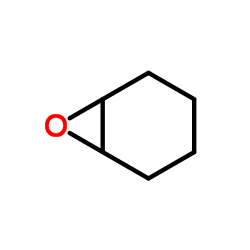Evaluation of the developmental toxicity of thalidomide using frog embryo teratogenesis assay-xenopus (FETAX): biotransformation and detoxification.
D J Fort, E L Stover, J A Bantle, R A Finch
文献索引:Teratog. Carcinog. Mutagen. 20(1) , 35-47, (2000)
全文:HTML全文
摘要
The developmental toxicity of thalidomide was evaluated using FETAX (Frog Embryo Teratogenesis Assay - Xenopus). Young X. Laevis embryos were exposed to this compound in each of two concentration-response experiments with and without differently induced exogenous metabolic activation systems (MASs) and/or inhibited MASs. Young male Sprague-Dawley rats were treated with either isoniazid or Aroclor 1254 to induce cytochrome P-450. Several of the rats were subsequently treated with diethyl maleate (DM) to deplete glutathione reserves. Specific aliquots of rat liver microsomes were treated with 3-amino-1,2,4-triazole (ATZ) or alpha-napthoflavone (alpha-N) to selectively inhibit P-450 activity. Bioactivation was indicated by increased developmental toxicity observed in MAS tests. Results obtained indicated that thalidomide was predominantly activated by P-450 isozyne CYP2E1, although weak cross-specificity between CYP1A1/A2 may have existed. Detoxification pathways for thalidomide were investigated by treatment of the MAS with cyclohexene oxide (CHO) and DM to inhibit the epoxide hydrolase and glutathione conjugation pathways, respectively. Results indicated that epoxide hydrolase was primarily responsible for the detoxification of bioactivated thalidomide. Teratogenesis Carcinog. Mutagen. 20:35-47, 2000.Copyright 2000 Wiley-Liss, Inc.
相关化合物
| 结构式 | 名称/CAS号 | 分子式 | 全部文献 |
|---|---|---|---|
 |
环氧环己烷
CAS:286-20-4 |
C6H10O |
|
New systematically modified vesamicol analogs and their affi...
2015-07-15 [Eur. J. Med. Chem. 100 , 50-67, (2015)] |
|
A Mild Catalytic Oxidation System: FePcOTf/H2O2 Applied for ...
2015-01-01 [Molecules 20 , 8429-39, (2015)] |
|
Oviductal microsomal epoxide hydrolase (EPHX1) reduces react...
2009-07-01 [Biol. Reprod. 81(1) , 126-32, (2009)] |
|
First success of catalytic epoxidation of olefins by an elec...
2000-07-01 [J. Inorg. Biochem. 80(3-4) , 219-25, (2000)] |
|
involvement of microsomal epoxide hydrolase enzyme in ovotox...
2007-04-01 [Toxicol. Sci. 96(2) , 327-34, (2007)] |